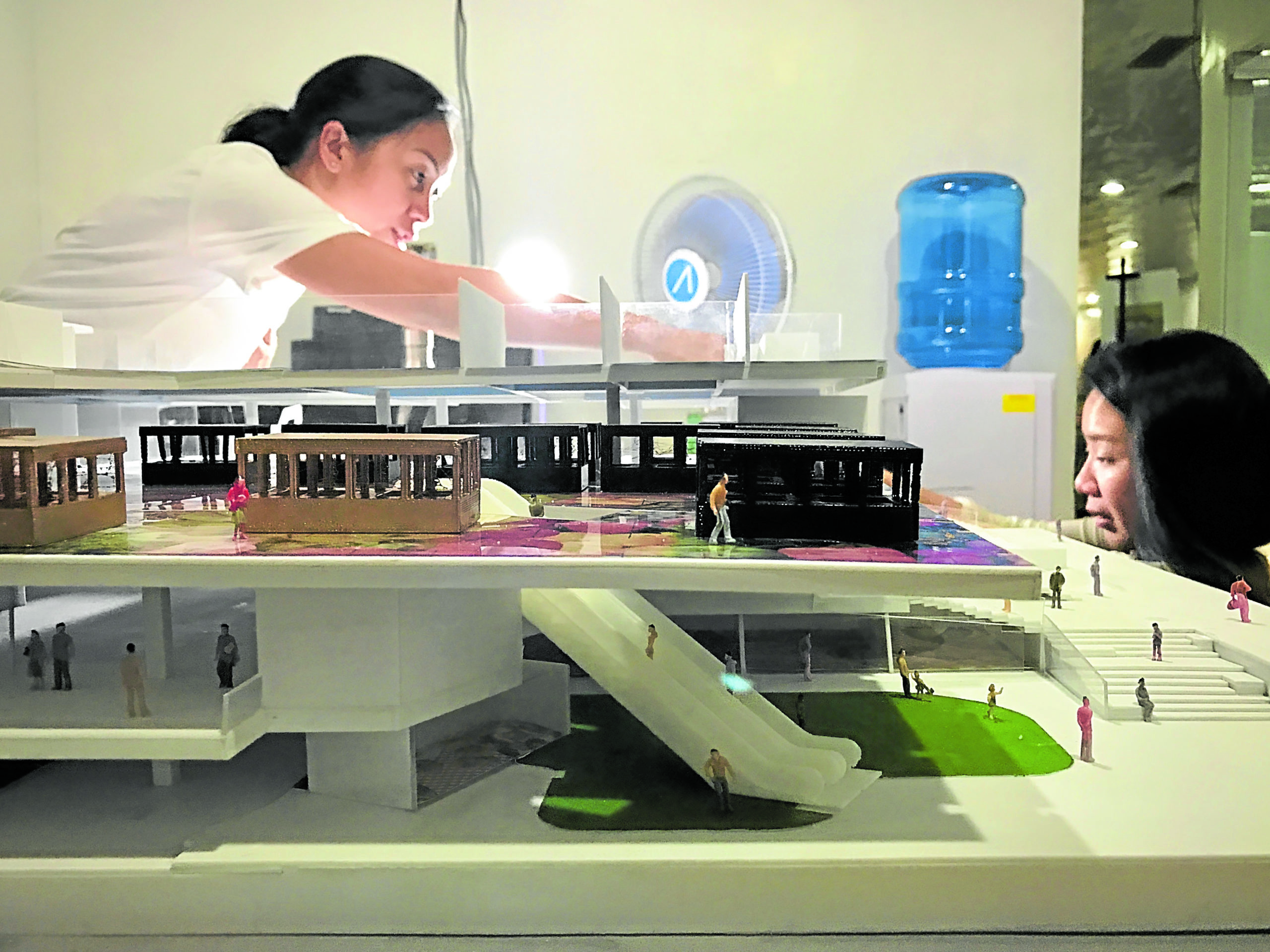Four months ago, life in Manila and the rest of the world was forever changed. The empty streets were so quiet you could almost hear the sound of space. Life slowed down to a trickle for most of us. Work was halted, plans were abandoned and we were all faced with this strange new thing that was an empty schedule.
This is not the modern world our bright, shiny gadgets and rampant growth and development had promised. It is not the world of active pursuits or unrelenting daily activities, but rather one of pensive and quiet contemplation. It is a collective experience that we all share in and must live through.
Human ingenuity is always driven by great need. Need is the rich soil from which new ideas sprout. And it is with these ideas upon which new technology is built—technology that brings about change and helps us move forward as a society.

Scale model of a market project by WTA. Technology is about the knowledge and skill to develop and apply ideas.
Design Technology
What is technology? What is this “science of craft” that describes the techniques, skills, methods and processes that we utilize in our daily lives? As you read this article on your mobile phone, or as you check for the latest updates on social media, we have allowed ourselves to recognize technology as a neat and tidy collection of data, and debased it to mean tech or detached ourselves from the means of touching upon it.
Architecture is built upon the bedrock of technology. The sum total of the progress that we have made as we moved out of the stone age is most evident in the cities that we have built. Our built environment relies upon technology to bring about the most efficient and appealing environment we can have for ourselves.
Architecture itself is a technology. Yet it is not in the newest materials or machines that this technology is found. Architecture technology is the knowledge that we put into use to come up with the spaces and forms that people desire. Knowledge defines the depth of our practice. It allows us to explore and discover.
I have always been bemused by first principles or pure and basic needs as a driver for design development—basic concepts that can be evolved, combined or merged to create new ideas. Architecture is a rational process that utilizes these basic programs to come up with compositions that continue to evolve as our society does.
Smart Technologies
Oftentimes, architecture is described as high tech to provide an illusion of something better. New technologies and materials that deem to provide us with the modern comforts that we need. Yet this is not the solution that we need. The technology that we need exists in the skills and methods that we develop to better plan for and project the needs of our future environment. Sustainable lifestyles always trump sustainable materials, if only because these same materials drive a commercial agenda to get us to consume more.
The most sustainable car will not be the Tesla that consumes power generated by a far-away coal plant, but the one that sits unused in the garage because you can reach your destination without it.
The same logic holds true for cities. Smart cities are not cities built with smart things, but rather by smart people. Smart cities are the cities that have the necessary infrastructure to attract and nurture competent and intelligent citizens. We must build the schools and institutions that allow us to innovate and develop better ways of utilizing our built environment. Cities thrive when its people become active stakeholders of the commons.
While we entrust our future cities to smart technologies that espouse data driven and automated solutions, they are not what make cities smart. Cities will continue to be the epicenter of human development. There is nowhere else you can find the energy and intensity of human life that permeates the urban realm. This human energy is what drives our communities.
Communities are a collective form of technology in a way. The social grouping that benefits each individual is a method of life that we have learned to embrace as people. The design and planning of our communities require us to keep this in mind. The core needs of a city are the civic amenities that bring us all together—intimate communities that work together and have access to the collective institutions that empower an active citizenry to make the right decisions.
Planning for the Future
Architecture is defined by the human form. Urban plans are defined by our social structures. Quick and easy smart solutions with the latest software or devices only provide a veneer of progressive solutions. Real solutions require commitments in the form of investment in developing our human and social capital.
Architecture technology cannot be engineering solutions that deal with the increasing number of problems of our growing megacities. Urban development requires careful planning and a strong vision of the changes that we shall all be facing.
There are few key moments in history of such magnitude as this pandemic. They are moments that deliver change whether we want to or not. The difference that we can hope for is that this change can be for the better.
Technology will play a big role as we move forward, but we must not forget that technology is a craft that relies on human minds to think and human minds to build.
As you find the time at home to idle and reflect, know that solutions are not about finding answers but rather about asking the right questions.

